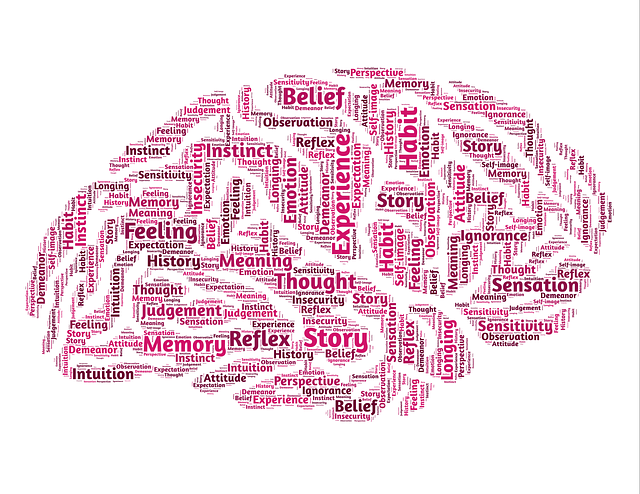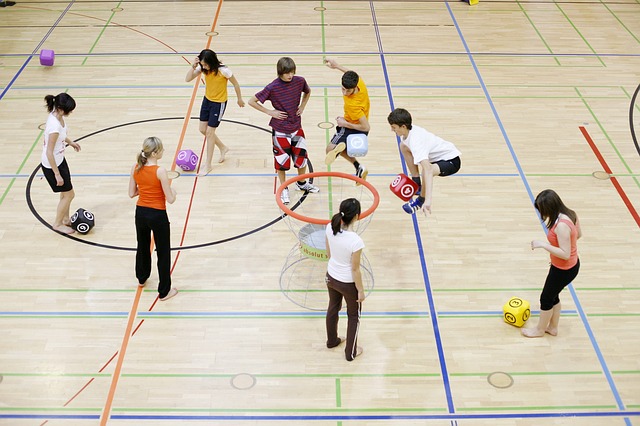Welcome back to my series on poverty in education! If you haven’t done so already, please check out the first two posts in the series:
Poverty In Education: Prevalence
Poverty In Education: The Brain
In the first two posts, I touched on the amount of children living in poverty in the United States and the effect that living in poverty can have on the brain. So, the question today is, how do we go about empowering our students to overcome the challenges that poverty puts in their paths?
Step 1: Understand how poverty affects the brain.
Step 2: Make classroom-level changes, both in thought-processes and actions
(Check back for later posts on schoolwide level strategies to implement at your school.)
Poverty In Education: Prevalence
Poverty In Education: The Brain
In the first two posts, I touched on the amount of children living in poverty in the United States and the effect that living in poverty can have on the brain. So, the question today is, how do we go about empowering our students to overcome the challenges that poverty puts in their paths?
Step 1: Understand how poverty affects the brain.
Step 2: Make classroom-level changes, both in thought-processes and actions
(Check back for later posts on schoolwide level strategies to implement at your school.)
| Changing the Brain Research shows that quality teachers can make the biggest impact on the academic success of students. It is up to you, as the teacher, to accept the responsibility of teaching all of your students, including students who come from low-income households. But with all of their obstacles and stressors - how do we reach them? How do we start to change their brain for the better? Here are 6 strategies you should add to your repertoire (based off the work of Eric Jensen in Teaching With Poverty in Mind, with my own thoughts added in). |
6 Strategies to Help Students from Poverty Succeed
- Use standards and data-driven instruction.
- Teach units based on a theme to build connections for students.
- Teach “operating system” skills, not just content.
- Enrich their day using the arts, movement, and sensory input.
- Make every minute count with engaged learning.
- Teach (and model) hopefulness.
1. Use standards and data-driven instruction.
Although standards sometimes feel like they can limit our teaching innovation and stifle student creativity, they are beneficial because they hold teachers and students accountable. The other important piece to the equation is using data to inform our decisions. It is important to know where are students start, what they understand and what they DON’T, and if they have reached our goals.
Use the following strategies to use data-driven instruction.
Although standards sometimes feel like they can limit our teaching innovation and stifle student creativity, they are beneficial because they hold teachers and students accountable. The other important piece to the equation is using data to inform our decisions. It is important to know where are students start, what they understand and what they DON’T, and if they have reached our goals.
Use the following strategies to use data-driven instruction.
- Collect data at the beginning of the year to understand the knowledge students have or don’t have
- Use formative assessments on a daily or weekly basis to evaluate student learning and the effectiveness of your lessons
- Regroup students often based on changing skill levels, based on data from assessments
- Adjust lessons based on student understanding
- Progress monitor students who are below grade level at least once a month to monitor growth
- Analyze summative assessments to inform teaching in the future
2. Teach units based on a theme to build connections for students.
To help make the standards come to life and to make connections, organize your units by theme. Try to avoid random lessons on skills that don’t connect to a bigger picture. Our low-income students need us to paint the bigger picture for them.
Use the following strategies to utilize thematic teaching.
To help make the standards come to life and to make connections, organize your units by theme. Try to avoid random lessons on skills that don’t connect to a bigger picture. Our low-income students need us to paint the bigger picture for them.
Use the following strategies to utilize thematic teaching.
- Follow Wiggins and McTighe’s Understanding by Design guide for planning lessons
- Organize (sort) standards into units based on themes
- Choose essential questions and core concepts for each unit, and communicate these to students
- Chunk similar objectives together within units
- Point out to students the patterns within the content and skills being taught
3. Teach “operating system” skills, not just content.
Low-SES students come in with deficits not only in content, but also in their “learning skills.” They may have deficits in memory, sequencing, processing, attention-skills, and academic language. We need to provide opportunities for them to develop these skills, or it won’t matter how we present our content - they won’t be able to access it.
Use the following strategies to teach “operating skills.”
Low-SES students come in with deficits not only in content, but also in their “learning skills.” They may have deficits in memory, sequencing, processing, attention-skills, and academic language. We need to provide opportunities for them to develop these skills, or it won’t matter how we present our content - they won’t be able to access it.
Use the following strategies to teach “operating skills.”
- Help students set goals and action plans to reach them
- Model positivity and optimism
- Utilize high-interest content to engage students and promote attention
- Have students work through a detailed process, using steps to encourage follow-through and attention
- Teach content in small chunks and use graphic organizers to aid in memory and recall
- Model your thinking during activities/lessons to develop processing skills
- Use project-based-learning to teach kids to sequence
4. Enrich their day using the arts, movement, and sensory input.
As Jensen says in his book, “poor children are half as likely to be taken to museums, theaters, or the library and are less likely to go on other culturally enriching outings … They have fewer or smaller designated play areas in the home and spend more time watching television and less time exercising than well-off children do” [1] Our low-SES students are already doing without; if we stick them in a room for drill-and-kill skill work, we are further debilitating them. Instead, we need to infuse culturally rich experiences into our everyday lessons.
As Jensen says in his book, “poor children are half as likely to be taken to museums, theaters, or the library and are less likely to go on other culturally enriching outings … They have fewer or smaller designated play areas in the home and spend more time watching television and less time exercising than well-off children do” [1] Our low-SES students are already doing without; if we stick them in a room for drill-and-kill skill work, we are further debilitating them. Instead, we need to infuse culturally rich experiences into our everyday lessons.
| Use the following strategies to enrich your lessons with arts, movement, and sensory input.
|
5. Make every minute count with engaged learning.
To close the gap, low-SES students need to take advantage of every minute of learning, especially because they are more likely to miss out on enrichment outside of school. So we need to make sure that we structure our classrooms so that all students are doing the “doing” of learning. If it is worth it for one student to do, it is worth it for all. Don’t let your students from low-income backgrounds resort to learned helplessness. Make sure they are involved in every activity.
Use the following strategies to engage your students in the lesson.
To close the gap, low-SES students need to take advantage of every minute of learning, especially because they are more likely to miss out on enrichment outside of school. So we need to make sure that we structure our classrooms so that all students are doing the “doing” of learning. If it is worth it for one student to do, it is worth it for all. Don’t let your students from low-income backgrounds resort to learned helplessness. Make sure they are involved in every activity.
Use the following strategies to engage your students in the lesson.
- ALL students need a job at ALL times - Vocalize what they should be doing (listening, writing, saying, etc.)
- Eliminate hand-raising. Use popsicle sticks to randomly call on students.
- Use choral response - both verbal and nonverbal (touch the word, all say ____)
- Use partners and small groups - with designated roles (speaker, paraphraser) and sentence frames utilizing academic language
6. Teach (and model) hopefulness.
Low-SES students often deal with learned helplessness after years of facing constant stressors. They may feel inadequate and as if they have no control over their situation. It is our job to inspire them and encourage a growth-mindset. Be mindful of your attitude and language and make sure that you are inspiring hope and positivity in your students.
Use the following ideas to make your classroom a hopeful and optimistic place:
1. Jensen, Eric. Teaching with Poverty in Mind: What Being Poor Does to Kids' Brains and What Schools Can Do about It. Alexandria, VA: ASCD, 2009. Print.
Low-SES students often deal with learned helplessness after years of facing constant stressors. They may feel inadequate and as if they have no control over their situation. It is our job to inspire them and encourage a growth-mindset. Be mindful of your attitude and language and make sure that you are inspiring hope and positivity in your students.
Use the following ideas to make your classroom a hopeful and optimistic place:
- Use positive affirmations (think: “You is smart, you is kind, you is important.” The Help)
- Celebrate even small learning milestones for all students
- Tell successful stories of others who have overcome obstacles and challenges
- Use positive and optimistic language at ALL times
- Give constructive criticism - do not demean students when you correct or discipline
- Avoid sarcasm at all costs
- Avoid complaining about children’s deficits - if they don’t have it - YOU TEACH IT
- Believe that all students can learn
1. Jensen, Eric. Teaching with Poverty in Mind: What Being Poor Does to Kids' Brains and What Schools Can Do about It. Alexandria, VA: ASCD, 2009. Print.
TUNE IN
Check back next week for my post on school-wide changes we can make to improve academic outcomes for students from low-income households.
Please comment below: What specific strategies do you use to engage students or to create a hopeful environment?
Check back next week for my post on school-wide changes we can make to improve academic outcomes for students from low-income households.
Please comment below: What specific strategies do you use to engage students or to create a hopeful environment?



 RSS Feed
RSS Feed
